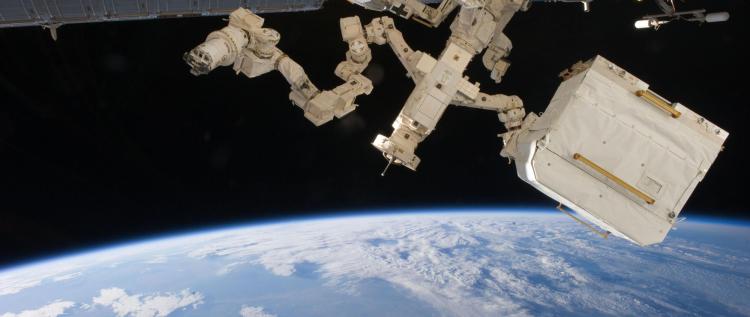Bridging the gap between space and terrestrial robotics

When the tires on the Mars rover Curiosity began wearing thin, scientists reprogrammed the vehicle to drive backwards, significantly extending tread life.
It’s a story that Dan Szafir, assistant professor for the ATLAS Institute and Computer Science Department, tells to explain the unique problems that scientists face when launching robots into distant and harsh space environments.
Space equipment needs to be more durable and reliable, which makes researchers risk averse, he says. Despite the challenges of their work, researchers working on robots launched into space don’t often connect with those working on terrestrial robots, where the stakes are lower and the pace of innovation is faster. It’s a costly disconnect, and to help turn that around, he and three CU Boulder colleagues—Nisar Ahmed and Jay McMahon of the Ann and H.J. Smead Aerospace Engineering Sciences Department, and Christoffer Heckman of the Computer Science Department—helped organize a one-day workshop in July during the Robotics: Science and Systems conference at the Massachusetts Institute of Technology.
The workshop, “Bridging the Gap in Space Robotics,” attracted about 40 participants from NASA, the robotics industry and academia, says Szafir. Jack O. Burns, NASA Advisory Council member and a professor at CU Boulder’s Department of Astrophysical and Planetary Sciences, presented, as well as staff from Nasa Ames Research Center and NASA’s Jet Propulsion Laboratory (JPL).
“We opened some eyes to the challenges in space,” Szafir says.
Those challenges also include transforming algorithms for state-of-the-art hardware so they also work on older hardware. Space robotics run on older hardware because robots launched into space need a higher degree of certification, which takes time.
Looking ahead, scientists have plans for robots to land on the far side of the moon, on remote asteroids and on Mars, to prepare for human missions. To be ready, a lot of innovation is required, and hopefully Szafir and his colleagues are pointing to a new model that can quicken the pace.


